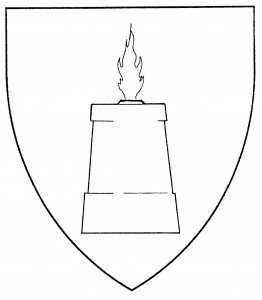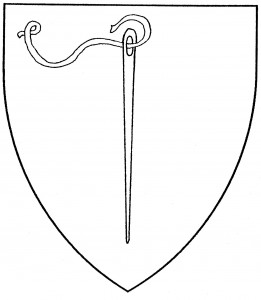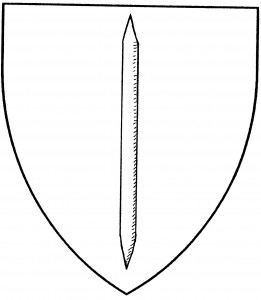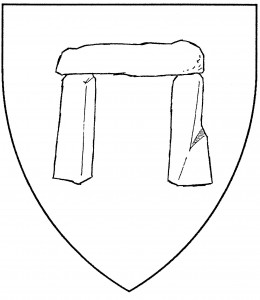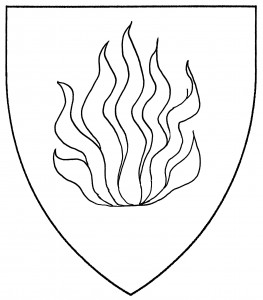
Flame (Period)
A flame is the area of combustion which gives off heat and light in a fire. It may also, more fully, be termed “flames of fire”. A single flame is drawn rather as a gout or ball, with several tongues to chief. Flames are found in the canting arms of de la Fiama, mid-15th C. [Triv 194], and in the arms of Wells, c.1525 [DBA2 338].
Flame “proper” is red and gold; its exact depiction in Society armory has changed over the years. At first, a “flame proper” was drawn as a “flame gules voided Or” on a light-tinctured field, and as a “flame Or voided gules” on a dark-tinctured field. Currently, flame proper is drawn with alternating tongues of red and gold, which is more in keeping with period depictions of the charge.
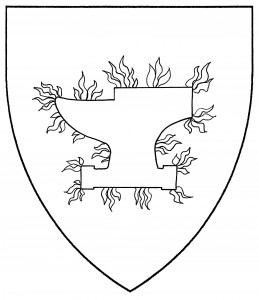
Anvil enflamed (Accepted)
The Society’s depiction of a “[charge] enflamed” has also changed over the years. Originally, a “[charge] enflamed” was equivalent to “on a flame a [charge]” – with the exception of candles, lamps, torches, and the like, where “enflamed” simply means “lit”. Currently, a “[charge] enflamed” is drawn as it would be in medieval armory: with spurts of flame issuant from and surrounding the charge. The illustration shows an anvil enflamed.
Charges have also been constructed of flame in the Society: e.g., the “bordure of flame”, “cross of flame”, “sword bladed of flame”, &c. This usage is no longer permissible, not only for lack of period examples, but because such charges’ identifiability is greatly reduced.
For specific charges which involve flame, see: altar, beacon, brazier, fireball, fireplace, phoenix, salamander, torch.
The Baron of Starkhafn bears: Per bend sable and checky argent and azure, in sinister chief a flame of fire proper within a laurel wreath argent.
William of Sark bears: Sable, a flame proper.
Jumana al-Zarqa’ bears: Argent, three flames sable.
